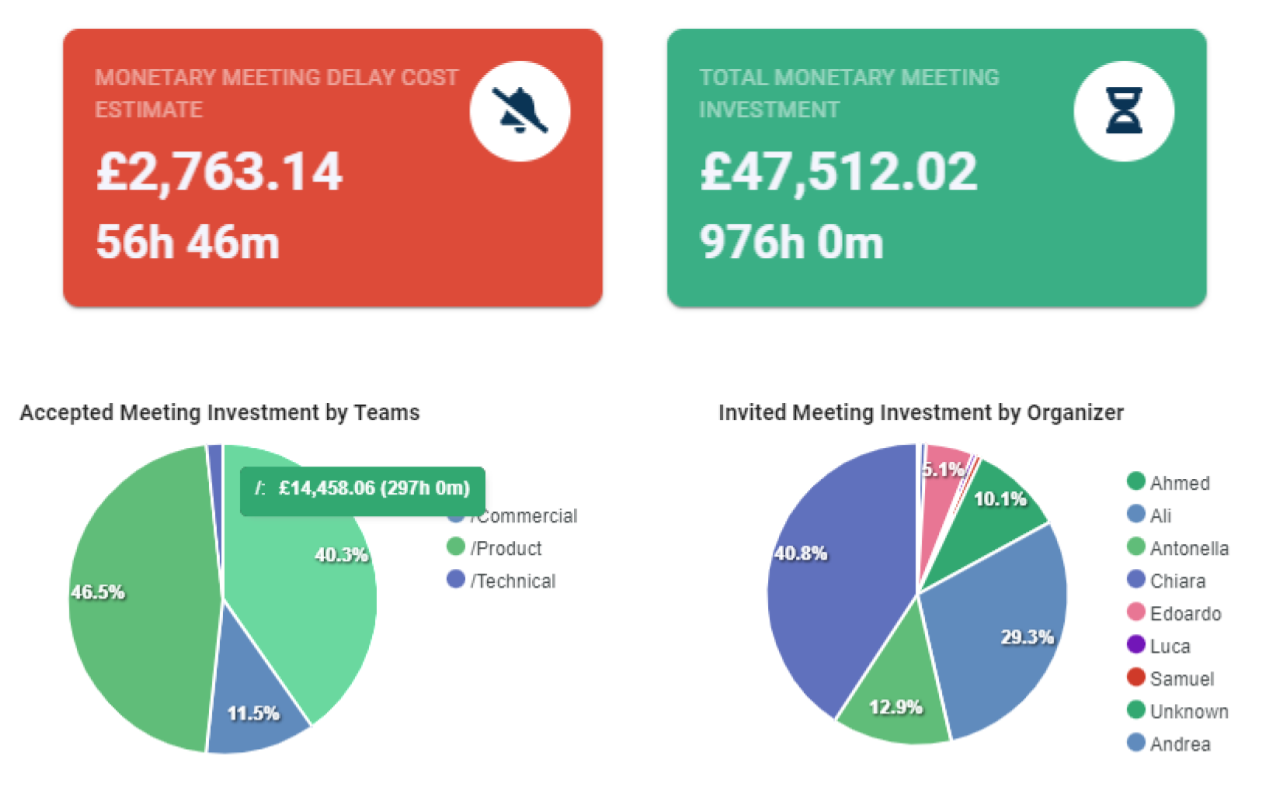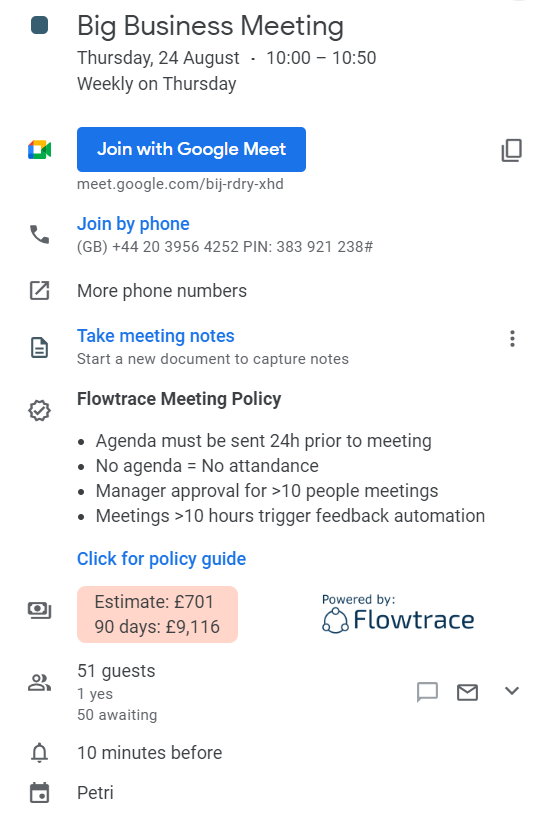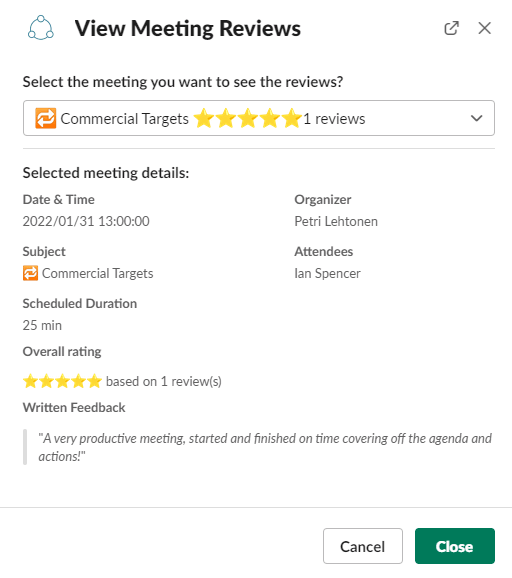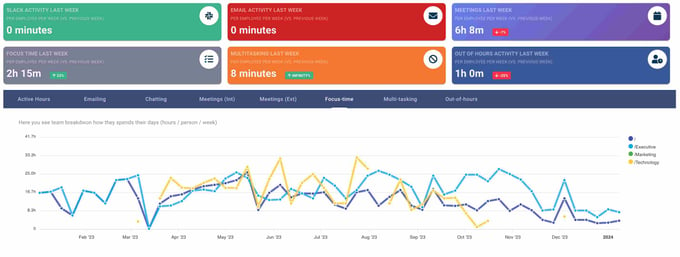Strategic Meeting Management – A Corporate Ops Guide
Optimize your organization's meetings with Strategic Meeting Management. Learn how to transform meetings from time-draining activities into strategic...
Optimize leadership meeting time for maximum productivity and success. Learn how to balance meeting time with focused work and effective meeting policies.
In leadership and executive management, meetings play a vital role in shaping organizational direction, collaboration, and driving strategic decision-making. They are key instances for exchanging ideas, aligning on goals, and steering companies towards success. However, the value of these meetings is deeply connected with how effectively they are managed and conducted.
For leaders, the challenge is not just in participating in or leading these meetings but in optimizing the time spent within them. Given the premium nature of an executive's time, every meeting must be purposeful, efficient, and yield tangible outcomes that contribute to the broader objectives of the organization.
This article delves into leadership meeting time, exploring how much time executives typically spend in these sessions and the impact on both their productivity and the company's trajectory. It introduces the concept of optimizing meeting time for leaders, a crucial aspect of executive management that balances the need for collaborative discussions with the imperative of maintaining strategic focus.
Current statistics reveal a significant portion of an executive's workweek is dedicated to meetings. A study by the Harvard Business Review found that senior managers spend up to 23 hours a week in meetings, more than double the amount compared to the 1960s. This substantial increase highlights a shift towards a more collaborative, yet time-intensive, managerial approach.
On one hand, they are essential for driving strategic initiatives, fostering communication across departments, and making pivotal decisions. They serve as crucial touchpoints for leaders to align their teams, set directions, and respond to emerging challenges.
However, the sheer volume of leadership meeting time can also have a counterproductive effect. It often leaves limited room for deep strategic thinking, individual contribution, and focused work, which are equally essential for effective leadership and organizational progress.
Thus, while meetings are indispensable for executive management, there is a growing need to optimize their frequency and efficiency. Balancing meeting time with other critical aspects of leadership is essential for maintaining a strategic perspective and ensuring organizational success.

When 50% of meetings are said to be a waste of time, excessive meetings present a significant challenge for leaders, impacting their productivity, decision-making capabilities, and ultimately the organizational culture. One of the primary downsides of an overloaded meeting schedule is decreased productivity. Executives are tasked with numerous responsibilities, from strategic planning to team management.
However, when a disproportionate amount of their time is spent in meetings, their capacity to focus on these critical tasks is severely diminished. This can lead to delayed decision-making, stunted project progress, and a backlog of strategic initiatives.
Decision fatigue is another critical issue facing executives who endure back-to-back meetings. Each decision made in a day depletes a leader's cognitive resources, and with a packed meeting schedule, the quality and effectiveness of these decisions can significantly decline. This fatigue not only affects the individual leader but can ripple through the organization, impacting overall strategic direction and operational efficiency.
The impact of excessive leadership meeting time extends to company culture and employee perception as well. A leader's availability and accessibility are crucial for a healthy workplace culture. However, if leaders are constantly engaged in meetings, it creates a barrier to open communication and can foster a sense of disconnect between the leadership and the rest of the organization. Employees may feel their concerns and ideas are not being heard or adequately addressed, leading to a decrease in morale and engagement.
Furthermore, a culture that prioritizes meetings over actual work can inadvertently promote a workplace environment where quantity is valued over quality. This can lead to a 'meeting culture' where the appearance of being busy is mistakenly equated with productivity, overshadowing the importance of tangible outcomes and results.
For executives, effectively balancing meeting time with other critical leadership responsibilities is essential to ensure both the smooth functioning of the organization and personal productivity. Strategic planning, creative thinking, and focused work are vital components of leadership that require dedicated time outside the confines of meetings.
One effective strategy for balancing these aspects is the implementation of 'time blocking.' This involves allocating specific chunks of time on the calendar for uninterrupted work. These blocks can be used for strategic thinking, planning, and other high-priority tasks that require deep concentration.

By scheduling these blocks just as one would schedule meetings, executives can protect this crucial time from being eroded by the demands of less critical meetings.
Another strategy is the prioritization of meeting agendas. Executives should evaluate the necessity and purpose of each meeting, ensuring that it aligns with their key responsibilities and the organization’s strategic objectives. This might mean delegating attendance to other team members when appropriate or even declining meetings that do not require executive input.
Setting a limit on the number and duration of meetings per day or week can also be beneficial. This helps in maintaining a balance between collaborative time and individual work time. It also encourages more efficient and focused meetings, as participants are aware of these time constraints.
Executives can encourage a culture of asynchronous communication within the organization. This reduces the need for frequent meetings, as many issues can be resolved through emails, collaborative documents, or messaging platforms. Asynchronous communication allows for more flexible and efficient exchanges, without the need for coordinating schedules.
Regular reviews of meeting effectiveness and personal productivity through a calendar audit can help executives refine their approach over time. This might involve seeking feedback from team members or reflecting on their own productivity levels and work quality.

For executives, establishing and adhering to effective meeting policies is crucial for maximizing productivity and ensuring that meetings are both necessary and fruitful. These policies serve as guidelines to determine when a meeting is required and how it should be conducted to yield the best outcomes.
The first step in this process is defining clear criteria for what constitutes a necessary meeting. This might involve assessing whether the meeting's purpose aligns with key strategic objectives or if it’s essential for decision-making processes that require collaborative discussion. Meetings that don’t meet these criteria might be better handled through alternative communication methods.
Once a meeting is deemed necessary, the next critical aspect is setting a clear agenda and specific objectives. Agendas should be circulated in advance, providing participants with an outline of topics to be discussed, and allowing them time to prepare. Each item on the agenda should have a designated time allotment to ensure the meeting stays on track and time is used efficiently.
Specific objectives for each meeting should also be established. These objectives provide a focus, driving the conversation and ensuring that every meeting has a clear purpose and desired outcome. This helps in keeping discussions relevant and productive, minimizing the likelihood of the meeting veering off-topic.
Assigning a facilitator for each meeting can be beneficial. This person would be responsible for guiding the discussion according to the agenda, managing time, and ensuring that each participant has the opportunity to contribute.

Post-meeting follow-ups are essential. Summarizing key decisions and action items helps in maintaining accountability and ensuring that the discussions translate into concrete actions.
Asynchronous communication involves interactions that do not require the immediate presence or real-time responses of all participants, such as emails, collaborative documents, and specialized project management tools. When it comes to leadership meeting time, integrating these methods can significantly reduce the frequency and dependency on synchronous meetings.
One of the primary benefits of asynchronous communication is the flexibility it offers. Executives can provide and receive vital information on their own schedule, allowing them to manage their time more effectively. This flexibility is particularly beneficial in global organizations where team members may be spread across multiple time zones, making real-time collaboration challenging.
Asynchronous methods also allow for more thoughtful and considered communication. Executives have the time to digest information, reflect on it, and provide more comprehensive responses. This often leads to higher quality decisions and outputs, as opposed to the sometimes rushed nature of in-person meetings.
Moreover, asynchronous communication contributes to a reduction in meeting frequency. By handling updates, quick checks, and follow-up discussions through these channels, the need for formal meetings decreases. This not only frees up executive schedules for more strategic tasks but also enhances overall productivity.
Additionally, these methods encourage a culture of documentation. Collaborative documents and project management tools automatically track changes, discussions, and decisions, creating a valuable record that can be referred to later. This level of documentation ensures transparency and continuity, which is often missing in verbal exchanges during meetings.
In executive management, leveraging technology like Flowtrace can be key in optimizing meeting schedules. Advanced tools like this provide data-driven insights that significantly enhance the effectiveness of meetings and overall time management.

Flowtrace can analyze an organization's meeting culture, offering executives a clear picture of how meeting time is being utilized. By aggregating and analyzing data on meeting frequency, duration, participants, and purposes, it provides actionable insights into the efficiency of these meetings. This information is crucial for executives to identify patterns of potentially unproductive meetings or meeting overload, enabling them to make informed decisions to optimize their schedules.
One of the key benefits of using Flowtrace is the ability to identify and reduce redundant or low-impact meetings. This not only frees up valuable time for executives but also for their teams, allowing for a more focused approach to work that demands deep concentration and strategic thought.

Also, these analytics can highlight the most effective meeting practices, helping executives to model these practices in their scheduling. This might include identifying the optimal meeting length that balances thorough discussion with time efficiency or understanding the best times of day for meetings based on energy levels and productivity patterns of the team.
Flowtrace can help in promoting a more balanced meeting culture within the organization. By providing insights into the overall meeting impact on employee productivity and satisfaction, executives can lead by example in adopting a more strategic and mindful approach to meetings.
Optimizing leadership meeting time is vital for enhancing leadership effectiveness and overall organizational success. The strategic management of meetings - balancing their frequency with the need for focused, productive work - is essential in today's fast-paced business environment. Flowtrace offers insightful analytics and data-driven recommendations that can transform the approach to meeting management.
By analyzing meeting patterns and effectiveness, it provides leaders with the necessary insights to make informed decisions about their meeting schedules, ensuring that every meeting adds value and aligns with organizational goals.
Optimize your organization's meetings with Strategic Meeting Management. Learn how to transform meetings from time-draining activities into strategic...
Learn how to optimize meeting time for peak performance and productivity. Discover practical strategies and innovative analytics for better meeting...
Optimize team efficiency with effective meeting policies. Learn how meeting policy Outlook add-in streamlines scheduling and enhances productivity....